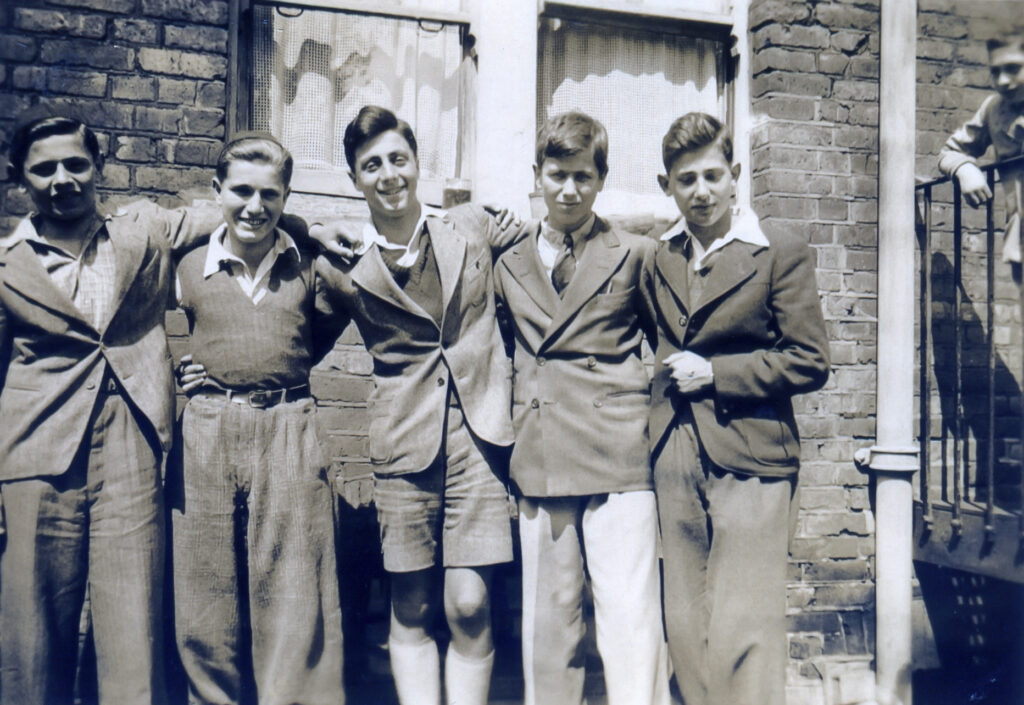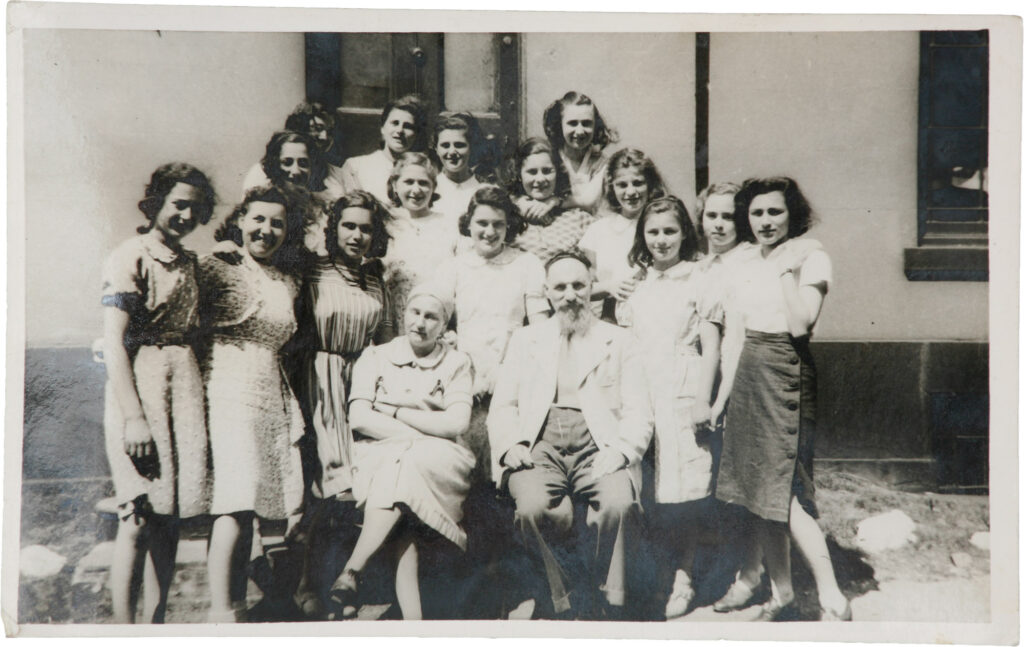The rescue of Jawne students to England
About 130 students of the Jawne were able to leave Nazi Germany and emigrate to Great Britain during 1939. The action was initiated and organized by principal Dr. Erich Klibansky.
The rescue of the students from the almost certain deportation and murder was part of the so-called Kindertransport – an unprecedented rescue operation in which more than ten thousand mostly Jewish children and young people were brought to various European countries.
After the violent attacks on the Jewish population that had taken place around November 9 and 10, 1938 (Pogrom Night) throughout the entire German Reich, the British government permitted the entry of children and young people who had been excluded and persecuted by the Nazis under the Nuremberg racial laws.
Most of the young refugees ended up in Great Britain, but there were also rescue programs for Jewish children from the German Reich in other countries, such as Belgium, the Netherlands or Sweden.
Almost all of the children and young people saved by the Kindertransporte lost their parents and other parts of their families in the Nazi concentration and extermination camps.
Shmuel Hatsor, one of the rescued students of the Jawne, reports in this video clip (8:27 minutes) about his memories of the Kindertransport and the time in England.
Violence and terror in October / November 1938
From the events of the Pogrom Night and the following day, also the Jewish center at St.-Apern-Strasse 29-31 was not spared.
Already in the night from November 9 to 10, 1938, Gestapo officials had gained access to the school building and the synagogue, confiscated almost all the school’s files, as well as the available money and even the Torah scrolls. On Thursday morning, November 10, 1938, people with tools appeared and began destroying the furnishings of the synagogue and the school building.
The teachers Salli Kanthal and Dr. Julius Simons were arrested and taken to the Dachau concentration camp. Entry to the synagogue and the school grounds was initially forbidden; classes could only begin again about two weeks later.
This had been preceded only a few days earlier by the so-called “Polenaktion” – the violent mass deportation of Jews of Polish origin from the German Reich to Poland on October 28/29, 1938, which also affected numerous families of Jawne students.
Immediately after the horrors of these events, principal Klibansky planned to move the entire school to England. Still in November, Klibansky wrote a circular letter to the parents, which was accompanied by a declaration of commitment with which the parents could register their children for this action. The fact that the parents of 295 children had already returned the signed declaration to the school on December 8 and were prepared to part with their children despite all the uncertainties, makes it clear how great the desperation of those days must have been. During the Christmas vacations of 1938, Klibansky traveled to England to explore the possibilities of moving the Jawne.
The Jawne hostels in England
Already on January 17, 1939, a first group of about 30 boys from the lower grades traveled from Cologne to London and moved into the house Minster Road No. 1 in the London district of Cricklewood.
This first group was accompanied by Rabbi Dr. Rudolf Seligsohn from Bonn, whose wife Gerda followed one month later. The Seligsohn couple took over the management of this first “Jawne-Hostel”.

In February 1939, 15 girls and boys traveled to London; the girls were accommodated in a hostel at 243 Willesden Lane, the boys probably in the nearby Hostel Minster Road No. 1.
Occasionally individual children joined the groups at different times, i. e. not all of the children and young people participating in the transports always traveled together or as a whole class.
The third transport started in Cologne on May 9, 1939 with all the boys of the two senior classes and ten sextans. Principal Klibansky personally accompanied this transport to Liverpool. The Sextans were sent on to Brighton, while the remaining boys had to spend another four weeks in a vacation home of the Liverpool synagogue community, because the planned hostel at Linnet Lane No. 19 was not yet finished and the furniture shipped from Germany had not yet arrived.
When in July the deputy director of the Jawne, Dr. Moritz Samuel, his sister Fanny and the teacher Else Nussbaum finally arrived and took over the management of the Liverpool hostel, Erich Klibansky traveled back to Cologne.
In June and July 1939 a group of about 25 girls – the last of the four Jawne groups – traveled to Manchester and moved into a hostel at 391 Waterloo Road, run by the Kahn couple from Altona. 1

Most of the Jawne students saved by the Kindertransport rescue mission were initially lucky enough to be together as a group in one of the “hostels”. In their reports, they often describe this as a source of strength to cope with the separation from their parents and the loss of family warmth, as well as a basis for often lifelong friendships.

The children’s transports and all things connected with Erich Klibansky’s efforts to save his students are central to the research, exhibition projects and educational work of the Jawne Memorial and Educational Center.
Without the trust of the surviving students and the willingness to share their memories, information and personal documents with us, the story of the Jawne and the Kindertransport could not be told. We are very grateful for this!
Online projects of the Jawne Memorial and Educational Center on the Kindertransport
In recent years, a project group of the Jawne Memorial and Educational Center has conducted intensive research on the Kindertransport, met numerous witnesses and evaluated a wide variety of sources and documents.
The focus of the online exhibition Kindertransporte from NRW, which was developed by the project group in 2010, is on the life stories of witnesses who were rescued from the Rhineland or Westphalia by a Kindertransport and who live in Great Britain. The large exhibition Children depart 5:13 pm – Recollections of the Polenaktion and the Kindertransport of 1938/39, which was shown in Cologne in 2013, is also available online and provides comprehensive information on the rescue of children and young people as well as on the mass deportation of Jews of Polish origin from the German Reich in October 1938 – a topic that is still largely unknown to the German public today.
1 All information on the four transports organized by Erich Klibansky from: Die Jawne zu Köln – Zur Geschichte des ersten jüdischen Gymnasiums im Rheinland und zum Gedächtnis an Erich Klibansky (Dieter Corbach, Scriba, Cologne 1990)